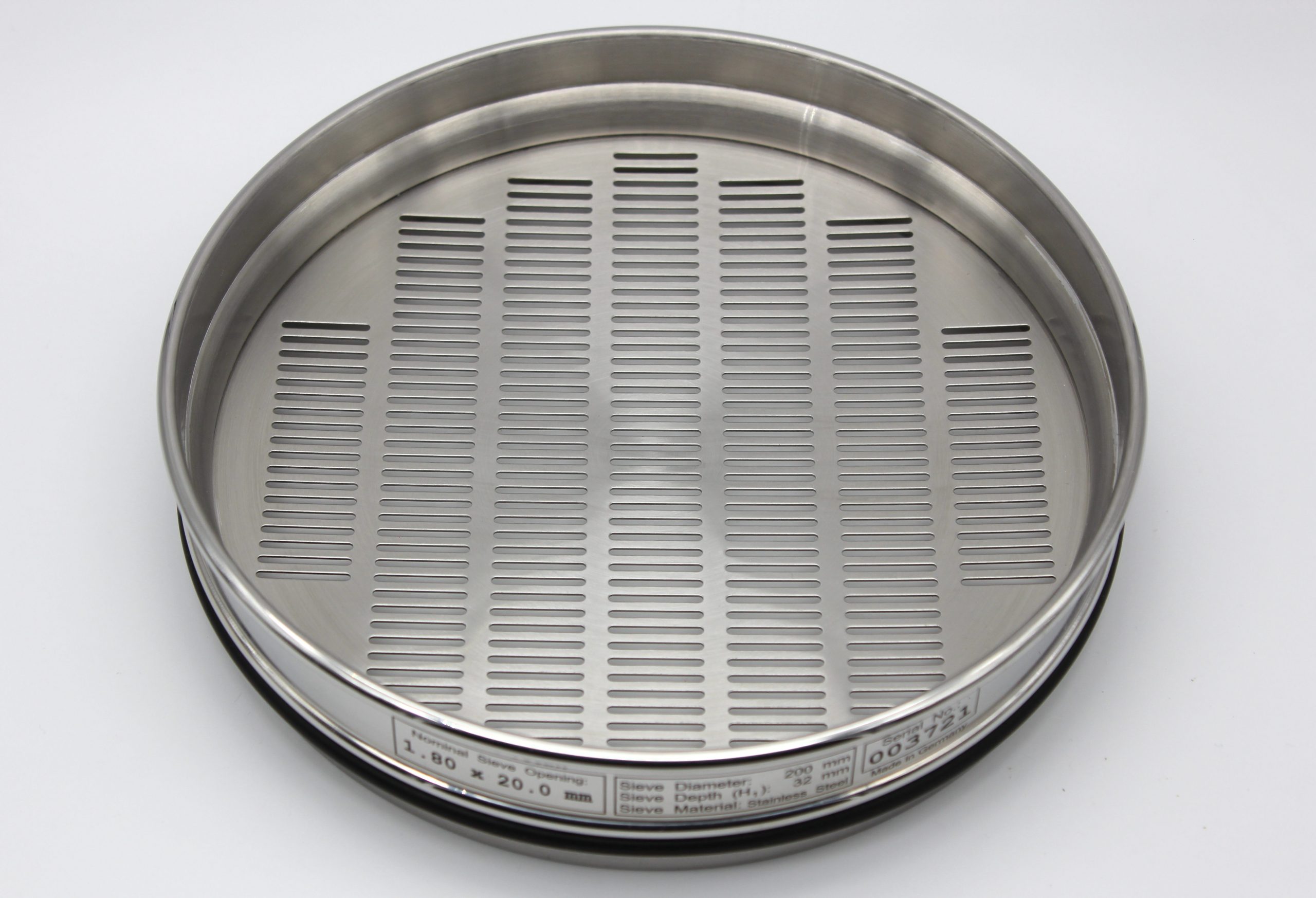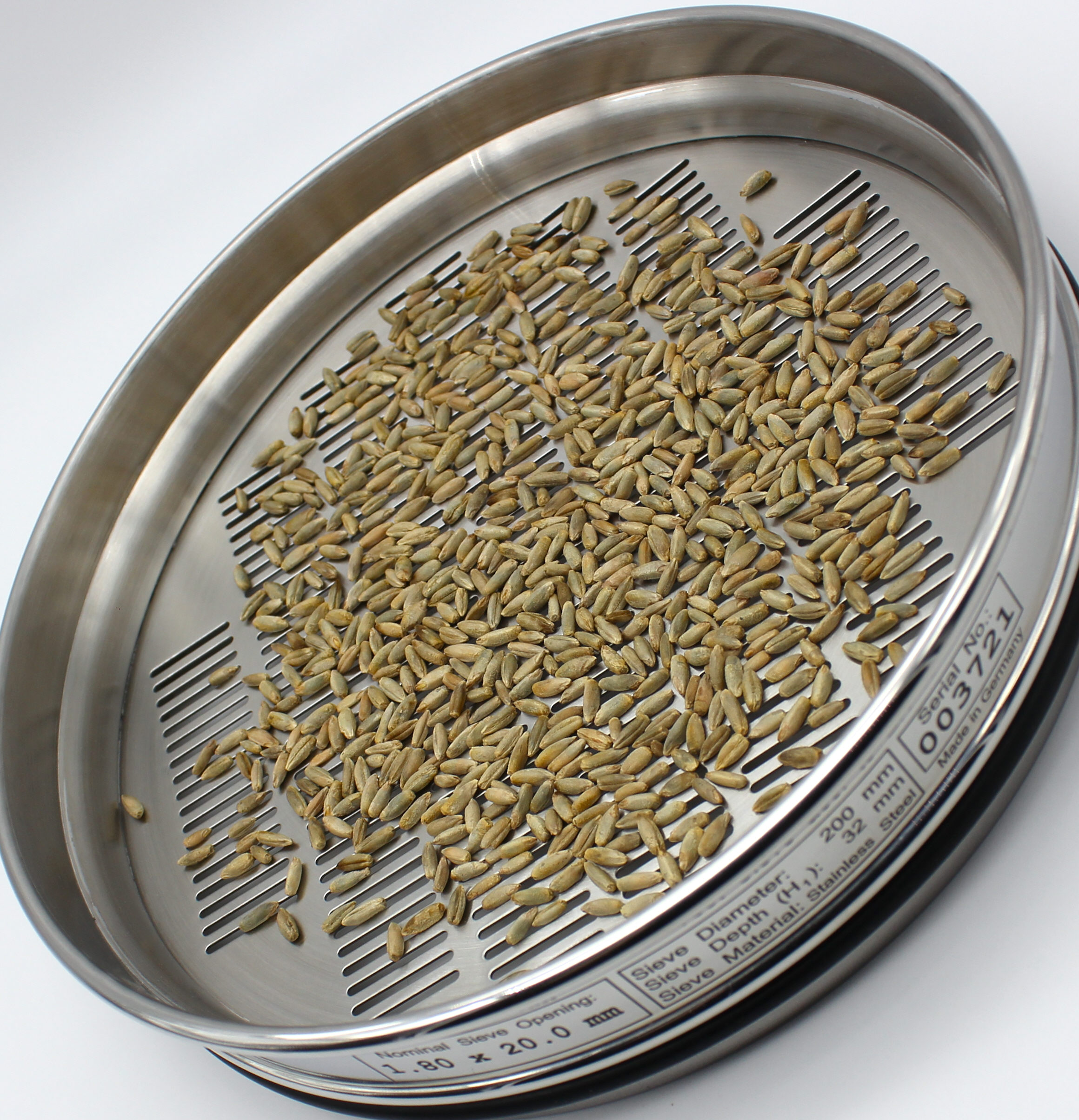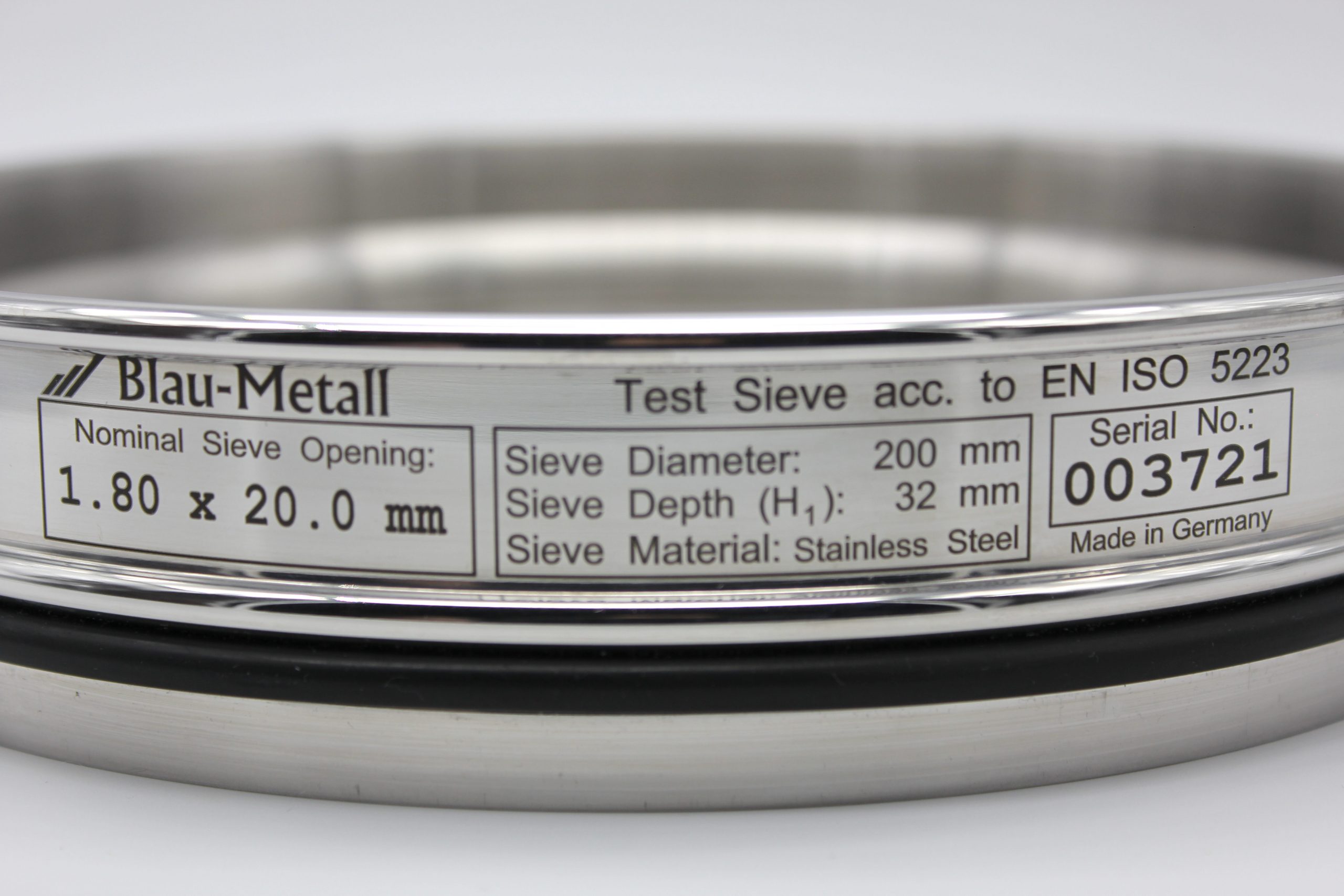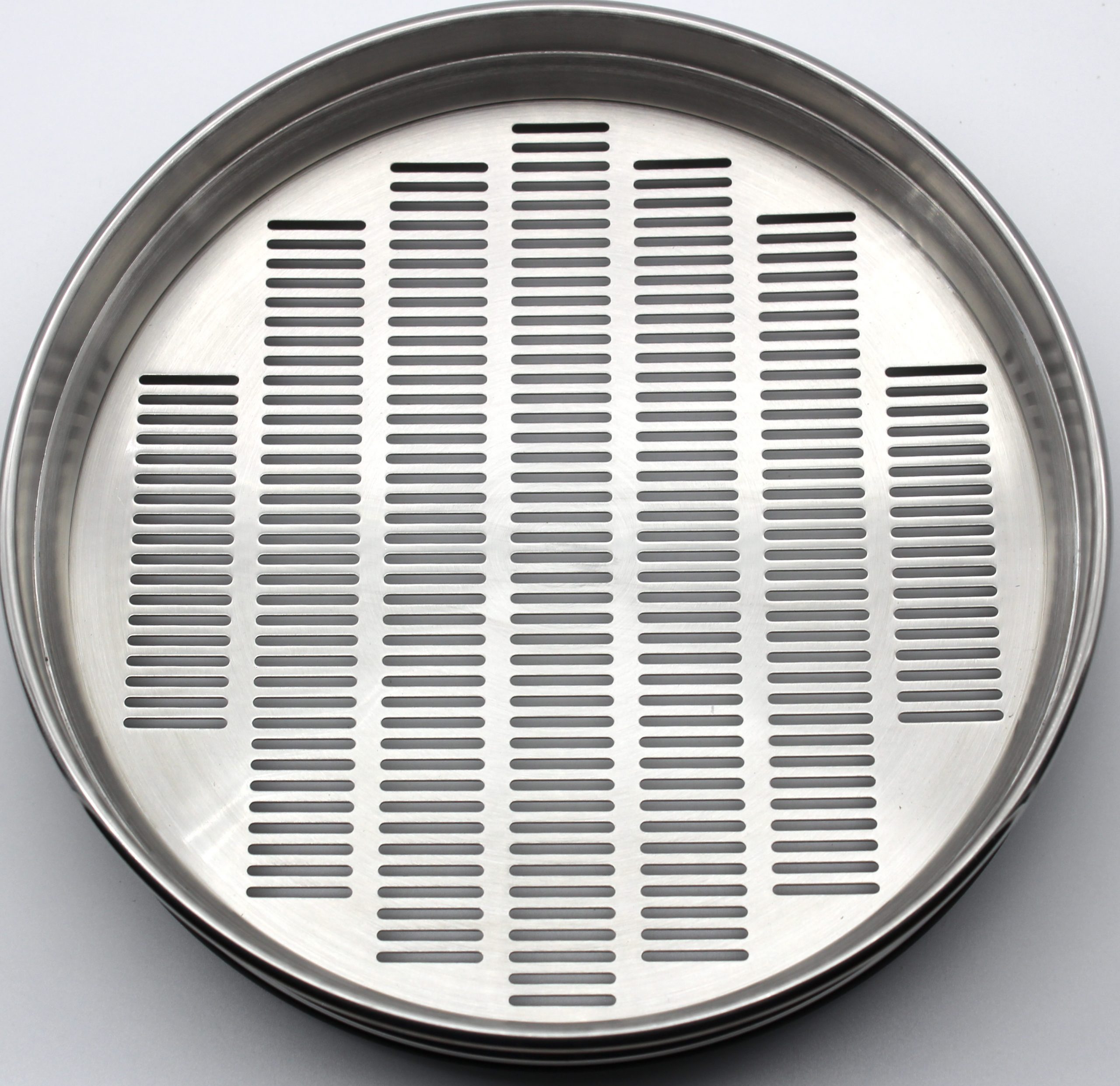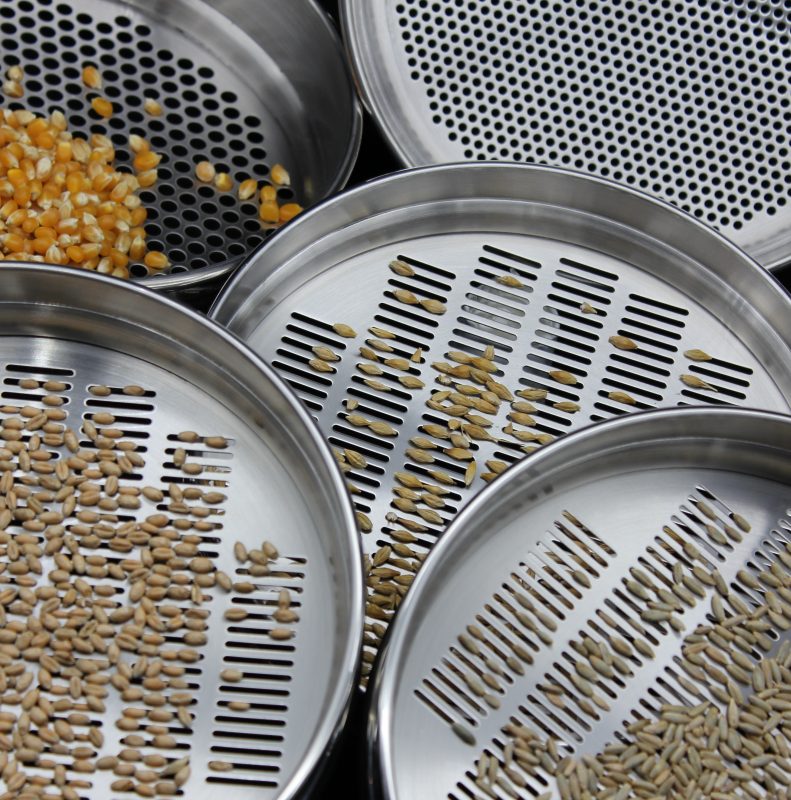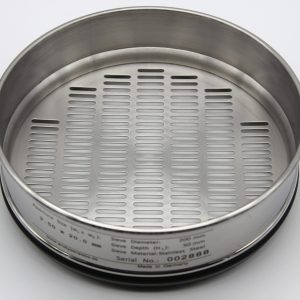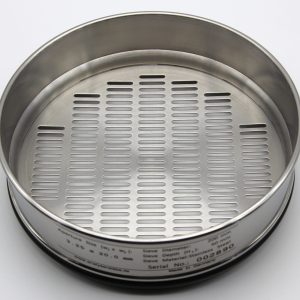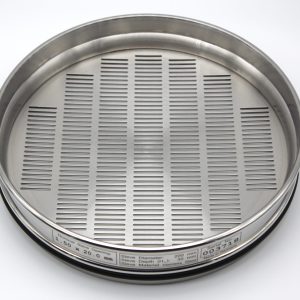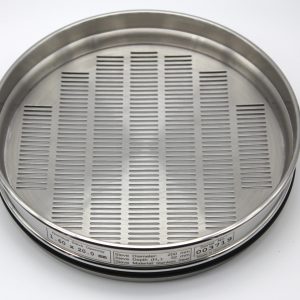Description
Blau-Metall Laboratory Test Sieve (Grain Sieve), ISO 5223
Test Sieve ⌀ 200 mm, Oblong 1.80 x 20.0 mm
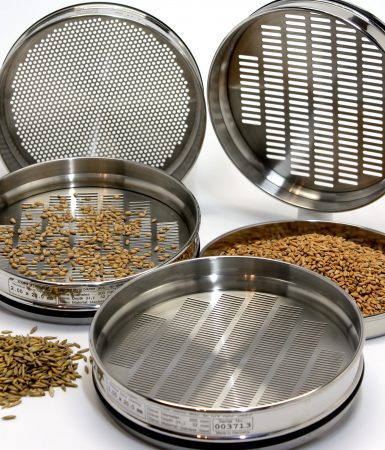 Stainless Steel test sieve with high-precision apertures for manual sieving by hand or automatic sieving with a sieve shaker according to ISO 5223 / EN 15587 and comparable national and international standards.
Stainless Steel test sieve with high-precision apertures for manual sieving by hand or automatic sieving with a sieve shaker according to ISO 5223 / EN 15587 and comparable national and international standards.
✔ Durable Design for Long Lifetime (All stainless-steel components)
✔ High-precision aperture according to ISO 5223
✔ Fully Sealed Design to eliminate cross contamination
✔ Tamper-Proof, 3D Laser Label with individual Serial Number for full traceability
✔ Incl. Calibration Certificate (EN 10204) in English Language
✔ Assembled & Certified in Germany, All Parts sourced in Germany
✔ Compatible with 200 mm Sieves & Sieve Shakers of all major manufacturers
Application
This test sieve is required for the following grain testing methods:
- Classification of shriveled / shrunken / undersized grains in cereal samples of rye according to EN 15587
- Classification of naked oats (United Kingdom National List Trials: Trial Procedures for Official Examination of Value for Cultivation and Use (VCU) Harvest)
- Determination of Besatz of Rye - Classification of shriveled grains in European Rye according to International Association for Cereal Science and Technology
Technical Specifications
| Sieve Type: | Oblong |
| Standard: | EN ISO 5223 |
| Sieve Diameter: | 200 mm |
| Sieve Depth (H1): | 32 mm (Half Height) |
| 50 mm (Full Height) | |
| Frame: | Stainless Steel (1.4301 / AISI 304) |
| Total Frame Height: | 46 mm (Half Height) |
| 64.5 mm (Full Height) | |
| Frame Thickness: | 0.8 mm |
| Sieving Medium: | Stainless Steel (1.4301 / AISI 304) |
| Plate Thickness: | 0.8 mm |
| Internal Tensioning Ring: | Stainless Steel (1.4301 / AISI 304) |
| Sieve Weight: | 430 g (32 mm), 530 g (50 mm) |
| Perforation Type: | Oblong in straight rows |
| Aperture Width (w1): | 1.80 mm ± 0.04 mm |
| Aperture Length (W2): | 20.0 mm ± 0.2 mm |
| Pitch (p1): | 4.20 mm ± 0.12 mm |
| Pitch (p2): | 25.0 mm ± 0.5 mm |
| Certification Type: | Calibration (incl. Certificate 3.1) |
| Laser Engraving: | English, incl. Individual Serial-No. |
| Certificate Language: | English |
| Internal Seal: | Double Solder Joint |
| External Gasket: | NBR 70 |
| Temperature Range: | -30 to 100 °C |
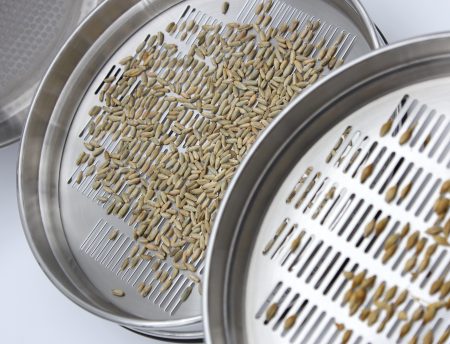 Blau-Metall Grain Sieves
Blau-Metall Grain Sieves
The Blau-Metall sieve portfolio builds on nearly 30 years of experience in the production of robust and highly-precise grain sieves across international ISO standards, European standards, the U.S. Code of Federal Regulations and a variety of national requirements to provide our customers with a complete solution for all grain sieving tasks across all markets.
Blau-Metall test sieves stand out for their particularly robust design and their high precision perforated plate achieved through a production process perfected over nearly three decades and a rigorous quality control program that includes multiple stages of optical measurements on each and every sieve we deliver. The sieves consist of high-stability stainless steel frames with smooth upper edges for easy handling and precision-aperture perforated plates made from corrosion-resistant stainless steel, both joined by a stainless-steel tensioning ring and a pair of robust solder joints that form a complete seal that will stay in place over an extended period.
Blau-Metall grain test sieves are compatible with quality sieves of other sieve manufacturers and can be used on sieve shakers and sieve machines of all major suppliers. Given their light weight and handy dimensions, the sieves are also ideally suited for on-site analysis and hand-sieving of grain samples. Our construction methodology with ease of use in mind enables a simple cleaning process for our sieves. With their fully sealed and corrosion- & temperature-resistant design, Blau-Metall sieves can deliver reliable and repeatable sieving results over a period of many years – a stark contrast to comparable sieves with aluminum or galvanized steel components.
Further Reading
> Blau-Metall Test Sieves according to EN ISO 5223
> Determination of Impurities (Besatz) in Cereals according to EN 15587


